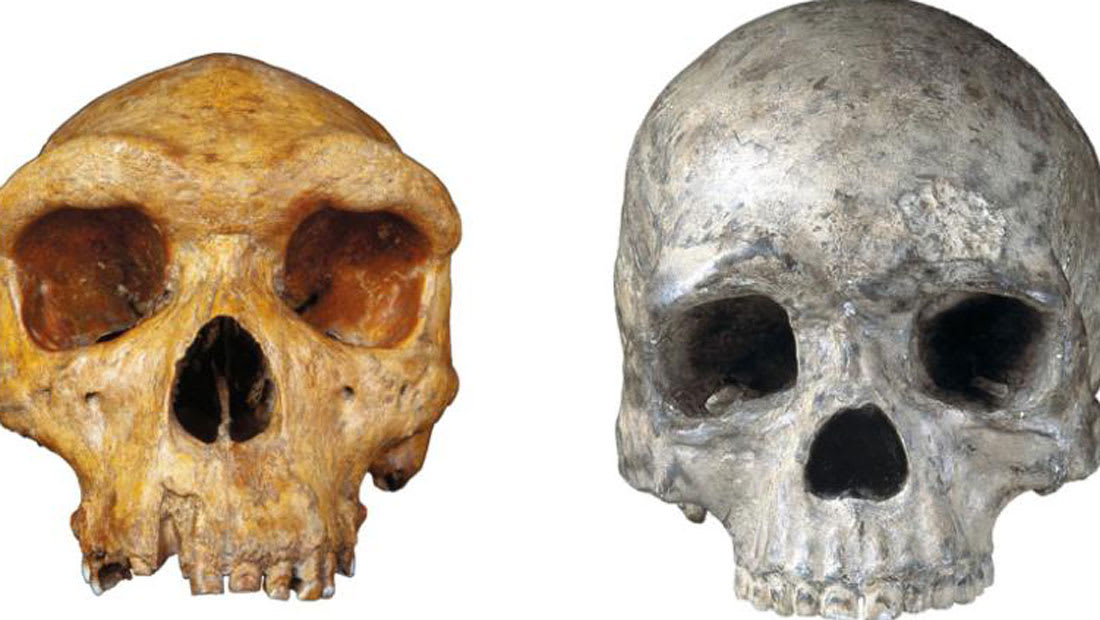دبي، الإمارات العربية المتحدة (CNN) -- إذا استطعنا مقابلة أسلافنا البشر منذ مئات آلاف السنوات، وإجراء محادثة معهم، فقد نعتقد أنهم كانوا يشعرون بالغضب والعدوانية، فقط من خلال النظر إلى حواجبهم.
وكان لدى الإنسان مثل هومو هايدلبرغ، الذي يعود وجوده إلى ما قبل 200 و600 ألف سنة، حكاية واضحة عن الجبين، ما أعطى الوجه نظرة عدوانية، وساعد في فرض السيطرة.
لكن البشر المعاصرين تطوروا ليكون لديهم جبيناً ناعم الملمس مع حاجبين يساعدان في التعبير، فماذا حصل، ولماذا لدينا هذين الحاجبين؟
واقترح الباحثون سابقاً أن حافة الحاجب كانت بمثابة وظيفة عملية، تملأ الفراغ بين منطقة الدماغ وتجويف العين أو تعمل كمثبِّت للجمجمة لتحمل قوة المضغ للمواد القاسية التي تناولها أسلافنا.
وأشار الباحثون في دراسة جديدة نشرت الاثنين في دورية " Nature Ecology and Evolution" إلى نظرية مختلفة. وكما هو الحال مع القرود، فإن الحاجبين كانا يشيران إلى الهيمنة الاجتماعية، والعدوانية، واختلاف الجندر، بدلاً من نظام دعم عملي في الجمجمة.
وعلى مدار الـ100 ألف عام الماضية، أصبحت وجوهنا أصغر تدريجياً، مقارنة بآثار إنسان نياندرتال وأوائل البشر. وبينما كانت جباهنا ناعمة الملمس ونمت بشكل أكثر اتساعاً، طورنا الحاجب، بدلاً من حافة الحاجب. وحدث هذا بالاقتران مع الحاجة المتزايدة لمهارات التواصل لإنشاء شبكات اجتماعية مع توسع عدد السكان.
ويمهد الحاجبان اللذان يتحركان ويعبران عن الاختلافات في العواطف، الطريق للتفاهم أو التعاون عبر الحدود اللغوية.
واستخدم الباحثون من جامعة يورك في المملكة المتحدة وجامعة Universitade do Algarve في البرتغال برنامجًا هندسيًا ثلاثي الأبعاد وفحصاً افتراضياً لجمجمة هومو هايدلبيرغ، أي الجمجمة الشهيرة لدراسة حافة الحاجب. واستخدموا الفك الأسفل لنياندرتال لإكمال الجمجمة في المحاكاة الخاصة بهم.
ومكنتهم برمجيات النمذجة من محاكاة النظريات والحالات المختلفة، مثل قوة المضغ، والعض على الأسنان، أو السلامة الهيكلية للجمجمة مع الحافة أو بدونها.
وقال بول أوهيغينز كبير مؤلفي الدراسة، وأستاذ علم التشريح في جامعة يورك في رسالة عبر البريد الإلكتروني: "التأثير الرئيسي هو اكتشاف أن حافة الحاجب، لهذه الحفرية، سلفنا الأخير، لا تُفسر ببساطة بدورها في تقوية الوجه، لمساعدته على مقاومة حركات العض القوية،" مضيفاً: "هذا يقودنا إلى إعادة النظر في الفرضية الاجتماعية، بأن حافة الحاجب أكبر بكثير مما يجب أن تكون لأنها تؤدي دوراً في التواصل الاجتماعي، وتحديداً للتعبير عن الهيمنة، أو العدوانية."
ويعتبر الباحثون أنه إذا كانت حاجتنا للبقاء تعتمد أكثر على التواصل، فإن هذا التطور سيكون معقولاً.

